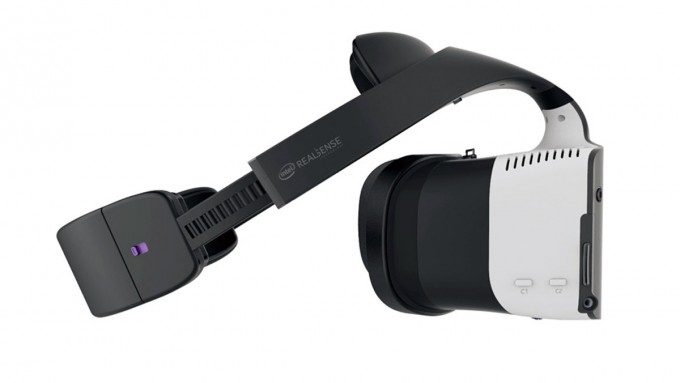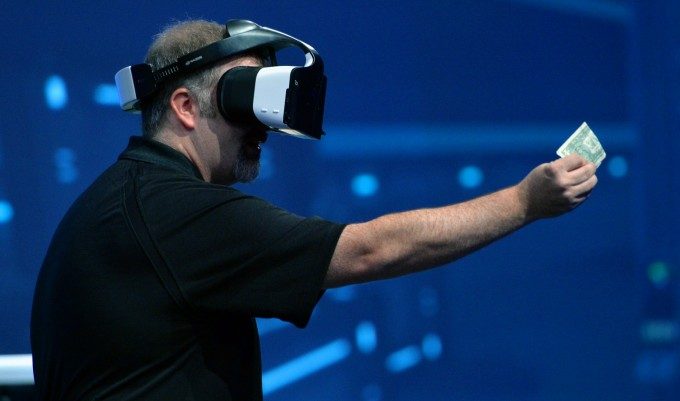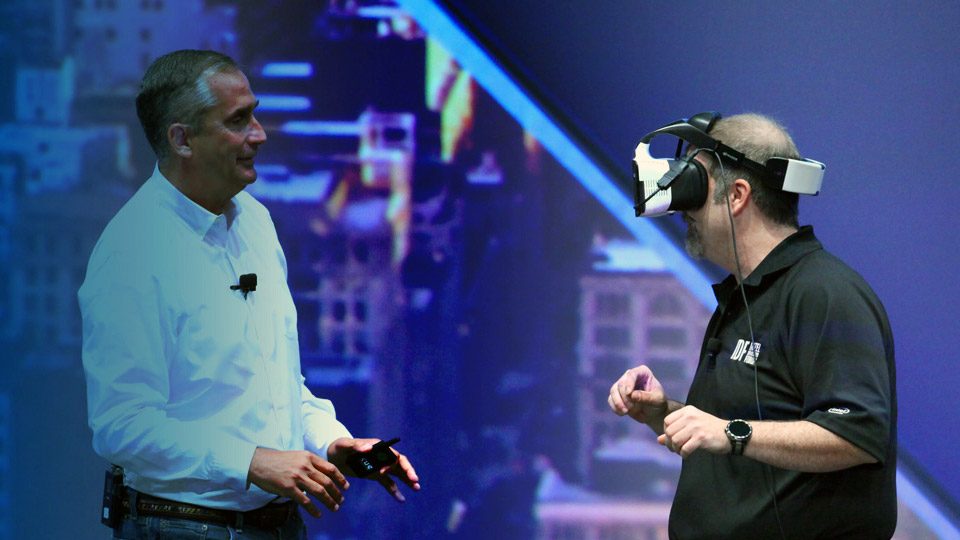Today at the Intel Developer Forum event in San Francisco, Intel revealed Project Alloy, an all-in-one mobile virtual reality headset which the company says will launch in 2017 as an “open platform.”
On stage at IDF 2016, Intel CEO Brian Krzanich unveiled the new headset during the opening keynote. The Alloy headset, which has fully on-board processing and sensors, is said to be capable of tetherless virtual reality, thanks to an ‘inside-out’ positional tracking solution which doesn’t rely on external trackers.

Tech specs on Project Alloy are slim for the time being, but the headset is said to have its own on-board processor (confirmed to be a “PC-class” 6th-generation Intel Core processor), as well as an array of the company’s ‘RealSense‘ cameras which handle a range of computer-processing functions.

Intel says that, tanks to RealSense, the headset will be capable of hand-detection, and it’s likely that the cameras will also track the space surrounding the user in order to provide tracking data. The company also says the headset is capable of “collision detection and avoidance,” enabling users to traverse large volumes of space without running into walls and other objects.
We’ve seen inside-out positional tracking solutions attempted by a number of different companies; so far, we haven’t seen any that are robust or performant enough for real-world VR usage.
Intel further says that the headset will support mixed reality (which they’re calling “merged reality”), allowing applications to combine parts of the virtual world with the virtual world.
For now, Intel is tight lipped on specs like resolution, field of view, weight, and battery life. But the company says that Project Alloy will be released in 2017 as an open reference design, upon which partners can build their own branded headsets.

With a ‘hanging’ head mount design, Project Alloy’s ergonomics are decidedly more like Sony’s PlayStation VR headset than the Oculus Rift of HTC Vive. That’s good news, as we’ve found Sony’s headset to be among the most comfortable out there.
IDF 2016 runs for the next two days, so we may see more of Project Alloy yet.







